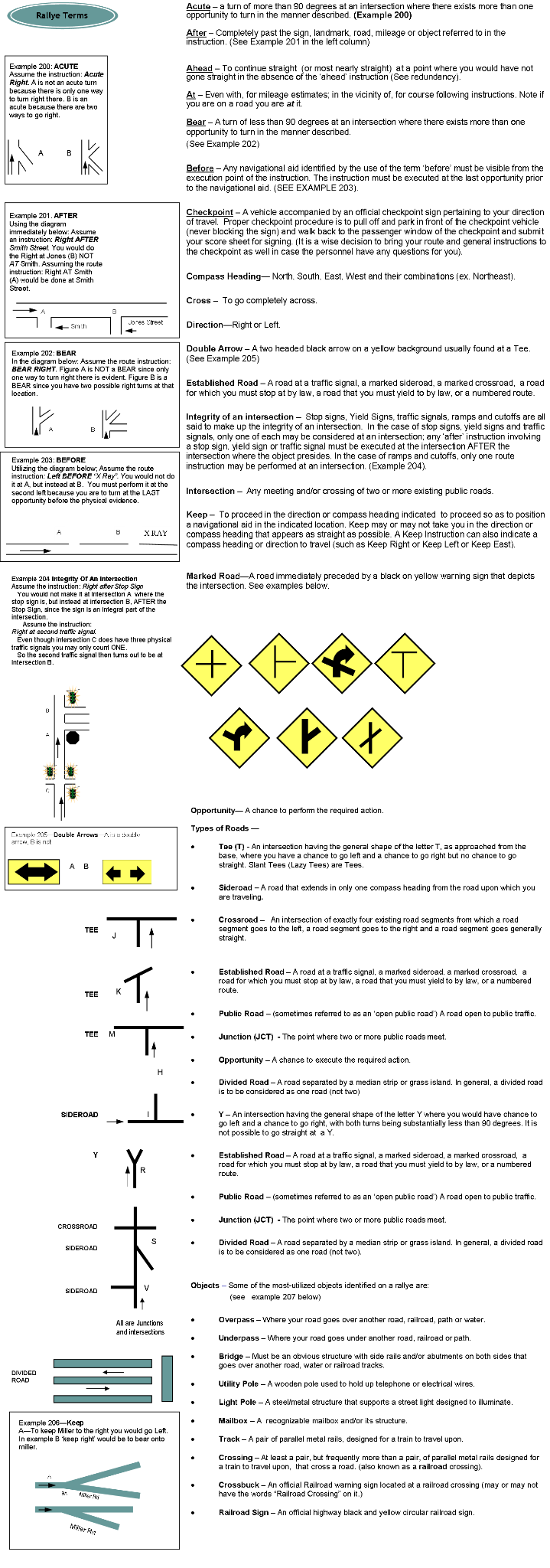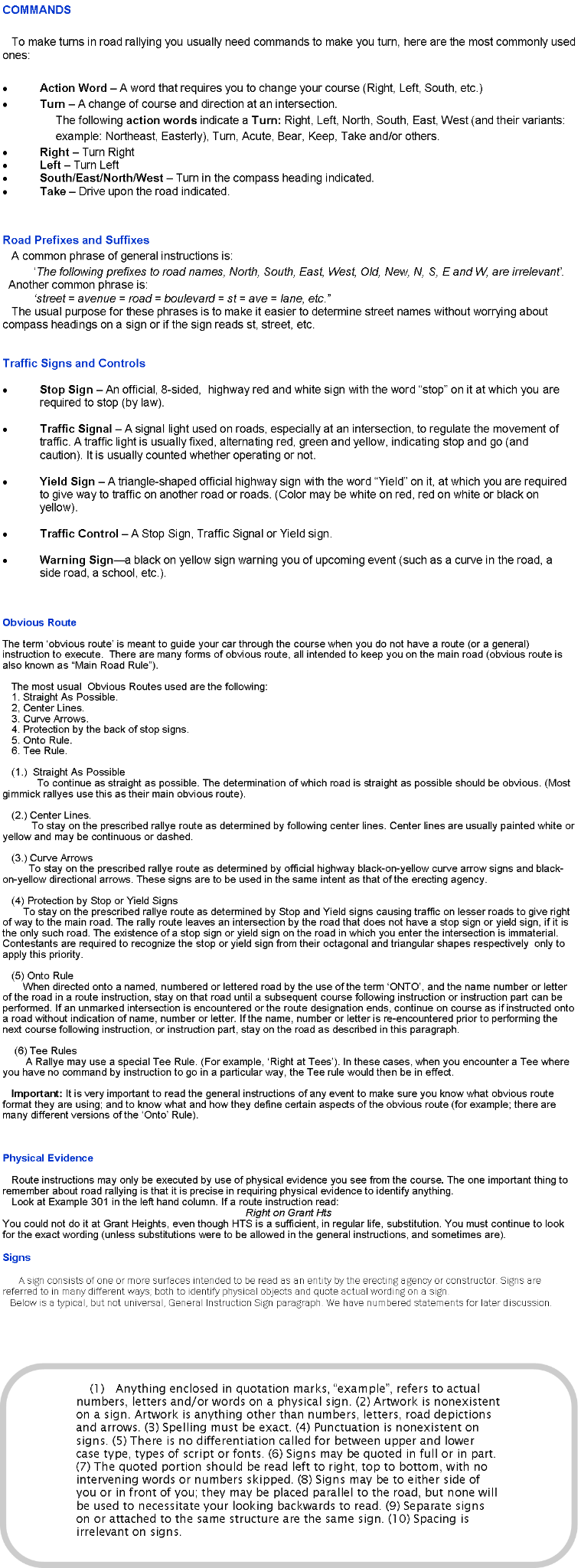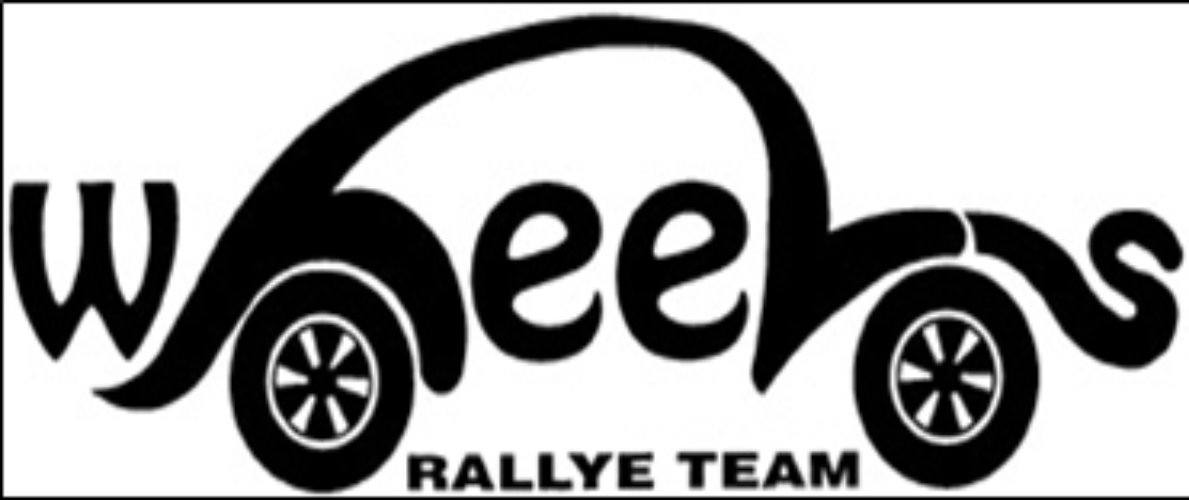Guide To Gimmick Road Rallying
All You Need To Know About Gimmick Road Rallying
While gimmick road rallyes in other parts of the nation may run the gamut from treasure hunts to poker runs, and we do puzzle rallyes, treasure hunts and tours here at Wheels Rallye Team, but Chicago-style gimmick road rallying is a scientific, challenging, creative and professional style of road rallying derived from TSD (Time, Speed, Distance) rallying and transferred to a palate of thematic game experiences.
You are probably familiar with board games. In most board games you have a set of rules, that you play the game by, and then you have the actual game play itself. In gimmick road rallying, you get a set of rules (termed General Instructions) which lay out the schematic for the actual play of the rallye (game).
Then you get the route instructions which, like in a board game, are the moves that get you around the board. Route instructions can be simple (example: Right on Jones) or can be two and three part instructions always directing an action. You never know where you are going until you get there.
But what if you do something wrong? Well, actually, we design road rallyes to trick you into doing things wrong, and we also design them so you will not get lost (okay, okay, sometimes you do get lost, but it is rare, we have a 99.6% of finishers on Wheels Rallye Team rallyes). We make the course so that you can go off course and come back on course again, and not even know it.; we call these bypasses (just like a highway bypass).
Creative thinking on the part of rallymasters devise all sorts of traps (gimmicks) which range from on course observation to sneaky hidden addenda posted on a car’s wheel. These elements, put together, into the collage of thematic scenarios and professional planning, make road rallying a game for the ages. One that can be enjoyed by singles and married people of all ages.
Wheels Rallye Team is committed to being the leader in creative assembly of gimmick road rallyes and fine auto sport events that touch both the brass ring of competition and the carousel of entertainment. The fun does not stop when you finish a road rallye, it continues into the endpoint where you get a precise Living Synopsis of the course, can get questions answered about what you may have done, and where the exclusive Wheels Rallye Team Awards are presented.
Then a day or two after the rallye you can see the official results posted again, on the official Wheels Rallye Team Website at wheelsrallyeteam.com along with championship points and comments about the rallye (sometimes including photos, and graphics). You may have a question or two about the event and we want you to submit it at the website and you will receive a prompt e-mail answer. The more you know about the sport the more fun you will have. So Come on out….!!!!
We have attempted to organize this Guide into parts that both define and explain the basic concepts and standard conventions of gimmick road rallying.
In doing so we have prepared a Glossary that gives detailed explanations of commonly used terms (either alphabetically or grouped when we deem necessary.) In the back of this Guide you will find alphabetical listings of terms and explanations to more easily reference what you are looking for in the guide.
Our attempt in this guide is to shorten the learning curve involved in understanding road rallying. While there is a lot of material included here, it does not have to be learned all at once. It is our intention to display the latest fundamentals and thoughts involved in gimmick road rallying. To that extent, we have tried to anticipate questions and provide solutions along the way.
While no guide can make up for road rallying experience, this guide can induct you into the “in the know” group of rallyists who continually turn in good scores on road rallyes because they don’t misunderstand basic usage of defined words and established conventions.
Of course Wheels Rallye Team is always available to you online for questions and rallye discussions.
DEFINITIONS AND CONCEPTS GLOSSARY


Discussion About Signs
Gimmick Road Rallye Rallymasters like to play with signs here are a few examples.
Discussion of Above
(1) This references that in the instructions you will have quotations around words, and that those quotations refer to wording, numbering, etc. on a physical sign (you may see on the course). If you read “Speed limit 35” - that would translate into the Sign A reference in the Right-hand column.
(2) Artwork, as in Sign A, is usually (on most rallyes) nonexistent on signs, as is the black border, since it is other than letters or numbers, road depictions or arrows. Thus, you could quote Sign A as “Watch For Children”. However in example 501 below, you could not quote “Phils Hot Dogs” because the I is a hot dog.
(3) Spelling gimmicks are the most common type of gimmick in a rallye. Using Sign A again, we would know the following quotation could not be read: “Watch For Chlidren”, because it is misspelled (yes it is look closely).
(4) Punctuation is usually (but not always) nonexistent on a sign (in fact it may actually be artwork which we discussed above). Look at example 501 below, again. The quotation in the instructions would read “Hot Dogs Hamburgers”, with no dash, since that is punctuation. Consequently, if the sign read “Phil’s”, it would have to be quoted as “PHILS”. If it was quoted in the instruction as “Phil’s” it would not count, since punctuation on a sign is nonexistent you can’t have a sign that includes an apostrophe.
(5) Using Example 501 again, you notice we have quoted it as “Phils” but it could be quoted as PHILS, PhILs”, etc. there is no difference between case types, or for that matter fonts/script.
(6) Signs may be quoted in full or in part (some rallyes may have a variation on this). This means we can quote “Hamburgers” or “Hot Dogs” or “Dogs”, etc. for sign example 501.
(7) The quoted portion must be read from highest point of the beginning of the quotation. You can read “Hot Dogs Hamburgers” in example 501, but you cannot read “Collins” in example 5002 because the C encompasses at least OL of the next line.
(8) Basically, you do not have to turn around to read signs (in particular on the other side of the road meant for traffic coming from the direction you are headed).
(9) In sign A, there are two separate signs attached to the same structure (making them one sign—some rallyes will separate them into individual signs—read carefully). Therefore you could quote this sign as “Limit 35 watch for”.
(10) Spacing is irrelevant on signs. Therefore you could quote from Example 501 the following: “DogsHam” , “OTDO”, etc.

Examples for signs mentioned in article still Under Construction

